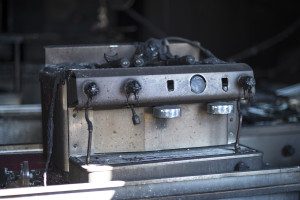Delivering a great cup of coffee to customers is essential to coffee shops and restaurants across the nation. To do that consistently requires keeping equipment in peak condition, and ensuring water purity. That’s where reverse osmosis (RO) comes in.
Getting the Water Right
Here’s the challenge when it comes to making a consistently great cup of joe. Coffee is one-part beans, one-part water; and the water part accounts for 98.5% of the cup. So getting the water right is pretty important.
Seems simple enough, right? Well, not exactly. You see, standard softened water contains a number of dissolved solids, including chlorine, chloramines and other minerals that lead to scaling and corrosion.
Scale and corrosion can be easily overlooked when one is simply drinking a glass of water. But they’re harder to ignore when that cup of coffee is costing you a few of your hard-earned dollars. Because here’s the thing: scale and corrosion – without question – compromise the taste of a cup of coffee.
Over time, they also become expensive problems that affect coffee and espresso equipment, impacting both performance and lifespan.
Scale: Present in water supplies are varying amounts of scale-forming compounds such as calcium and magnesium carbonates. When these mineral compounds pass through coffee and espresso equipment, hard, rock-like deposits form in the internal components.
This scale buildup impedes the efficiency and overall performance of this equipment, and increases the need for costly maintenance, and if untreated, will eventually lead to equipment shutdown, which requires even more expensive servicing.
In order to remove these deposits, powerful acids need to be used, which have to be handled carefully due to safety concerns. Additionally, these acids are extremely hard on the equipment, shortening longevity.
Corrosion: Corrosion is material deterioration due to reactions to the environment. When it comes to coffee and espresso, the chloride present in water can penetrate the surface of stainless steel, especially at higher temperatures where it can become increasingly reactive.
When this occurs, corrosion develops. Because many equipment manufacturers have “minimum water quality standards” that include chloride levels, reducing these levels is critical in maintaining the equipment.
Reverse Osmosis to the Rescue!
Most of the inline filtration systems used today works by trapping and holding specific contaminants within a media. This is an imperfect system because these filters don’t trap the smallest contaminants, and through repeated use, their effectiveness diminishes.
Conversely, Reverse Osmosis rejects virtually all contaminants. By forcing the water through an “RO membrane,” with a pore size of one ten-thousandth of a micron (a human hair is approximately 80 microns), 85 to 90 percent of the water’s initial chemistry is removed, as well as 90 to 95 percent of microbial material. By doing so, these contaminants never make their way into the paying customer’s cup of coffee.
The end result is a water superior in purity. This purified water offers the perfect hardness profile for optimal flavor and extraction of the coffee grounds. Plus, in almost all cases a reverse osmosis system costs less than inline filters.
Moreover, since these contaminants are rejected through the RO process, they never make their way into the equipment where they do damage. In doing so, Reverse Osmosis greatly reduces the need for costly servicing repairs or even premature product replacement
Components of RO Systems
There are some basic components common to any RO system used today in coffee shops and restaurants. First, the pre-filter traps larger particles in the water like rust and debris. Second, an activated carbon filter then traps removes organic chemicals and chlorine.
The next level of filtration takes place in the RO Filter where total dissolved solids (TDS) and other contaminants are removed. Sometimes a second carbon filter is used for taste. Finally, ultraviolet lights can also be integrated for sterilizing any microbes that may have escaped the filtration process.
Today – for many – coffee is much more than a hot, caffeinated beverage; it’s the reason to get up in the morning. It’s a passion – a culture even. But delivering a cup of coffee isn’t as simple as mixing water with beans.
For those in the business of selling a cup of coffee, RO will not only keep your customers happily coming back, it will help keep your machinery working in tip top shape, saving you the expense of costly maintenance or premature replacement.
We’ll do more than give you a quote—we’ll visit your site to analyze your industrial water needs.


Follow Us